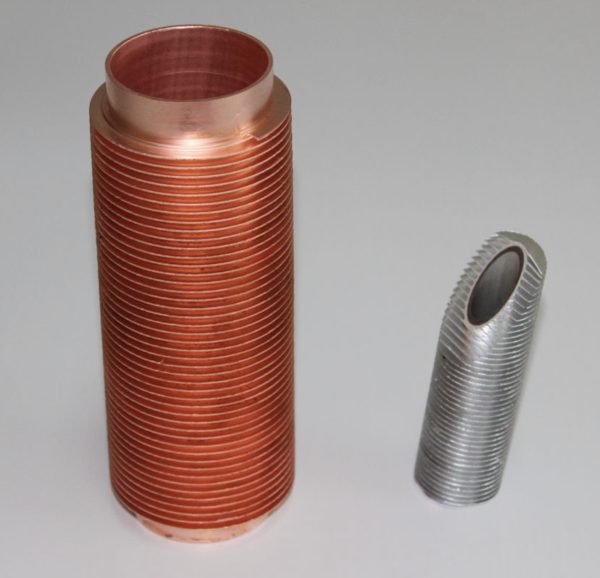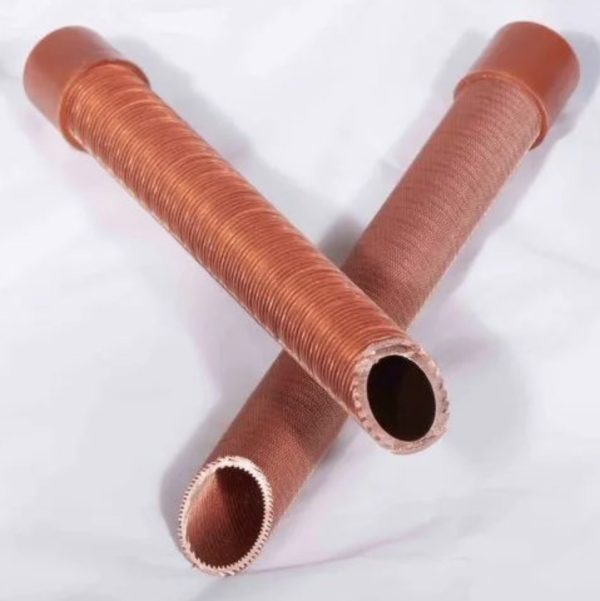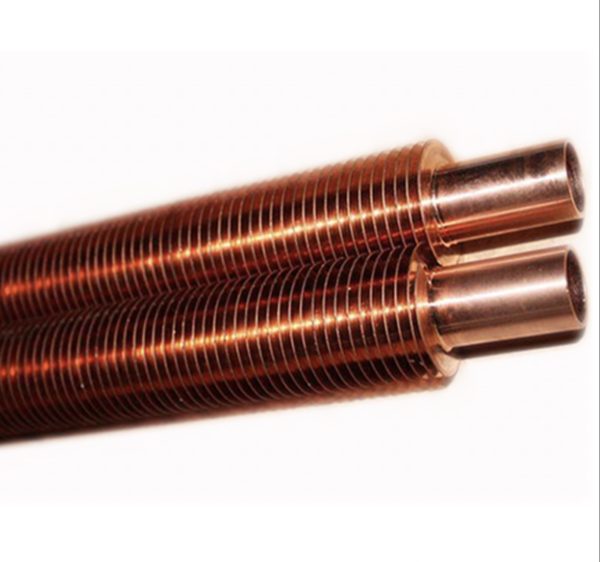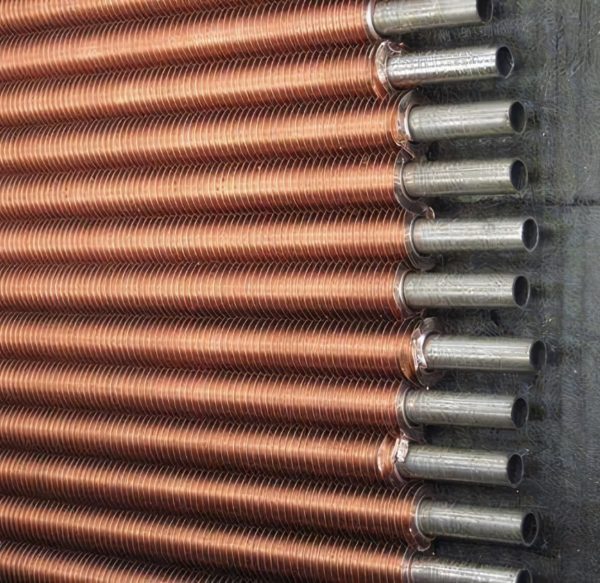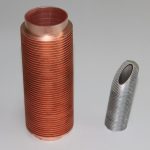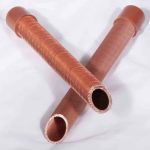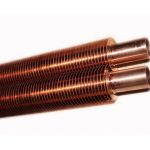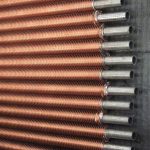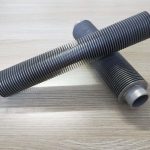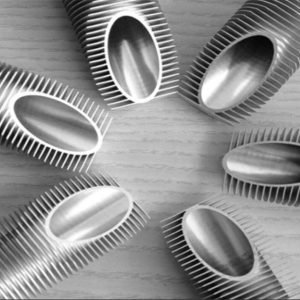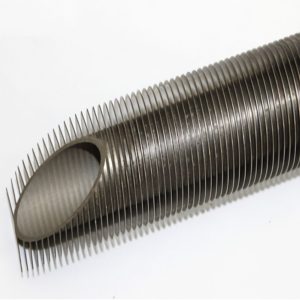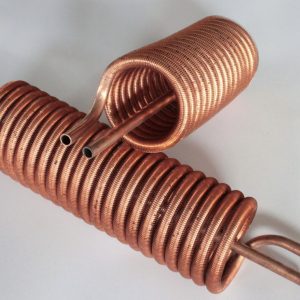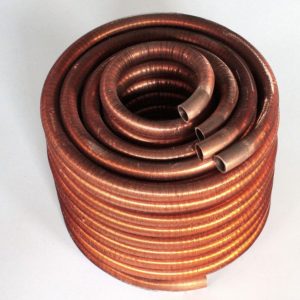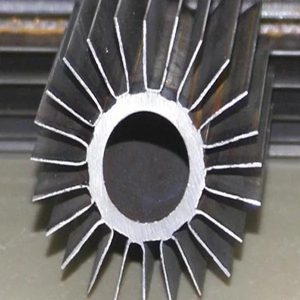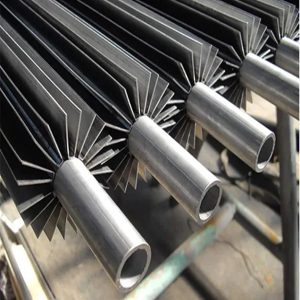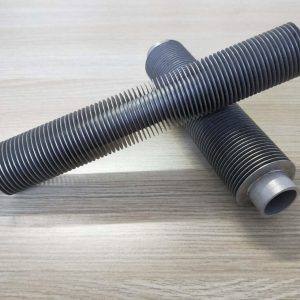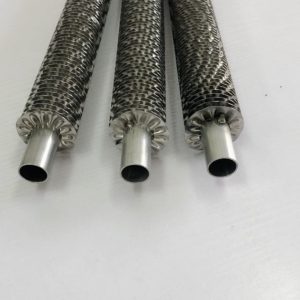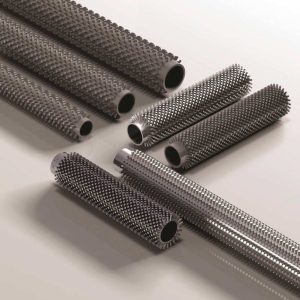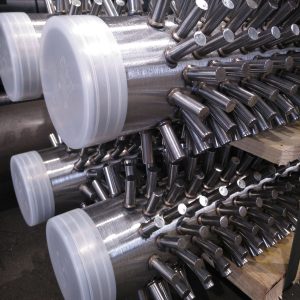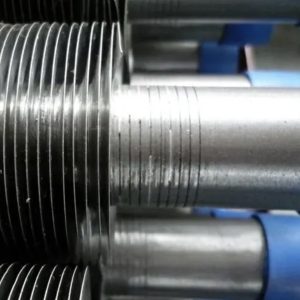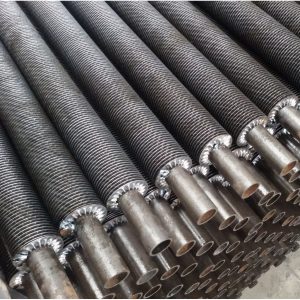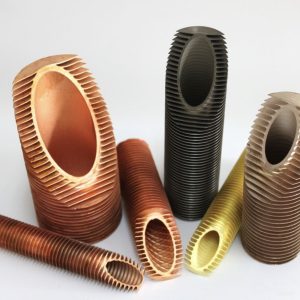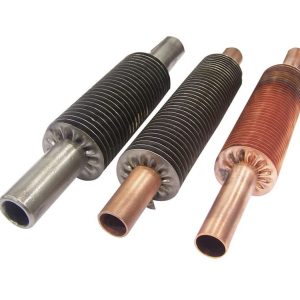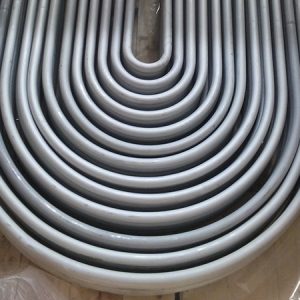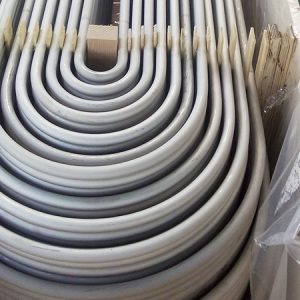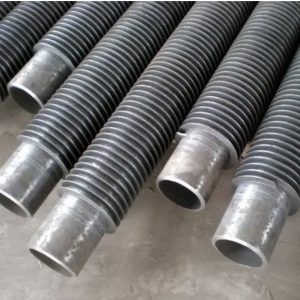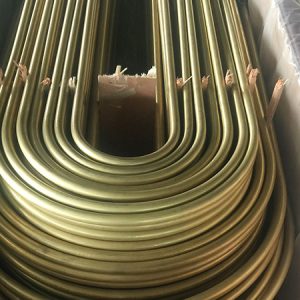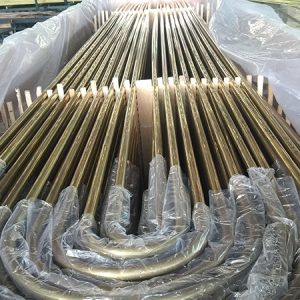Copper Fin Tube
Copper is a metal element, and pure copper is a soft metal. The surface is reddish orange with metallic luster when it is just cut open, and its simple substance is purple-red. Good ductility, high thermal conductivity and electrical conductivity, so it is the most commonly used material in cables and electrical and electronic components.
It can also be used as a building material and can be composed of many alloys. Copper alloys have excellent mechanical properties and low electrical resistivity. The most important ones are bronze and brass. In addition, copper is also a durable metal that can be recycled multiple times without compromising its mechanical properties.
Copper pipes (also known as red copper pipes) are commonly used in tap water pipes, heating and cooling pipes, and can be used in different environments. Copper pipes combine the advantages of metal and non-metal pipes in cold and hot water systems. Copper pipes are resistant to high temperatures and can be used in a variety of environments. Compared with this, the shortcomings of many other pipe materials are obvious.
- Description
- Inquiry
Description
Copper is a metal element, and pure copper is a soft metal. The surface is reddish orange with metallic luster when it is just cut open, and its simple substance is purple-red. Good ductility, high thermal conductivity and electrical conductivity, so it is the most commonly used material in cables and electrical and electronic components.
It can also be used as a building material and can be composed of many alloys. Copper alloys have excellent mechanical properties and low electrical resistivity. The most important ones are bronze and brass. In addition, copper is also a durable metal that can be recycled multiple times without compromising its mechanical properties.
Copper pipes (also known as red copper pipes) are commonly used in tap water pipes, heating and cooling pipes, and can be used in different environments. Copper pipes combine the advantages of metal and non-metal pipes in cold and hot water systems. Copper pipes are resistant to high temperatures and can be used in a variety of environments. Compared with this, the shortcomings of many other pipe materials are obvious.
For example, the galvanized steel pipes used in residential buildings in the past are very easy to rust. If they are not used for a long time, the tap water will turn yellow and the water flow will become small. In addition, the strength of some materials will decrease rapidly at high temperatures, which may cause unsafe risks when used in hot water pipes. The melting point of copper is as high as 1083 degrees Celsius, and the temperature of the hot water system is negligible for copper pipes.
China Copper Pipe is the best one and is the best connecting pipe. The copper pipe is fire-resistant and heat-resistant, and can maintain its shape and strength under high temperature without aging.
The pressure resistance of copper pipes is several times or even dozens of times that of plastic pipes and aluminum-plastic pipes. It can withstand the highest water pressure in today’s buildings. In the hot water environment, with the extension of service life, the pressure capacity of plastic pipes significantly decreases, and the mechanical properties of copper pipes remain unchanged in all thermal temperature ranges, so their pressure resistance will not decrease, nor there will be aging.
Copper finned tubes manufacturing process
Pipe line——compressing or rolling——strip peeling——washing——pressure test——blast blowing——packaging. The cold machining process of fins provides excellent mechanical resistance , fins are strong and have strong resistance to atmospheric corrosion, etc. The pressure required to extrude the fin from the aluminum sleeve creates an excellent “pressure bond” between the two materials. In addition, the aluminum finned material completely surrounds the metal of the tube, so there is no risk of electrical corrosion at the fin root (between the tube and the fin). All of these advantages ensure the most stable performance over time of all other fin types.
Copper finned tube applications
Copper finned tubes products are widely used in petrochemical, power plant and power plant renovation, air conditioning and refrigeration, boilers, finned tube economizers and air preheaters.
Fin tubes are a type of heat exchanger used in many industries. They are made of aluminum cladded carbon steel and have brazed aluminum fins. The fins increase the surface area of the tubes, which allows them to transfer heat more efficiently. This makes them ideal for applications where high heat transfer rates are required.
Finned tubes are used in applications that involve the transfer of heat from a hot fluid to a colder fluid through a tube wall. They are used in condensers, coolers, and furnaces. The larger surface area means that fewer tubes are needed compared to the use of plain tubes.
The type of finned tube is chosen depending on the specific requirements of each process equipment unit. The fin type and combination of materials are chosen based on the specific requirements of each process equipment unit.
Why use finned tubes?
Finned tubes are used in applications where high heat transfer rates are required, such as in power plants and refrigeration systems. The fins increase the surface area of the tube, allowing for more efficient heat transfer between two fluids. This makes them an ideal solution for heat transfer applications where space is limited.
Finned tubes are used in condensers, coolers, and furnaces. The larger surface area means that fewer tubes are needed compared to the use of plain tubes. This can decrease the overall equipment size and can in the long-run decrease the cost of the project.
Finned tube heat exchangers can be used in a broad range of industries including oil & gas, power generation, marine and HVAC&R. They generally use air to cool or heat fluids such as air, water, oil or gas, or they can be used to capture or recover waste heat.
The biggest problem with using a finned tube heat exchanger is with the cleaning and maintenance of the outer surface of the tubes. Because of the fins, mechanical cleaning becomes very difficult and you would have to go for chemical cleaning.
What is the difference between fin tube and finned tube?
Fin tubes are a type of heat exchanger that are used in many industries. They have a finned surface, which increases their surface area and allows them to transfer heat more efficiently. Finned tubes are typically used in two-phase heat transfer applications, such as condensation or evaporation.
Finned pipes are generally used for single-phase heat transfer applications. Both finned pipes and finned tubes use fins to increase the surface area for heat transfer.
Finned tubes are used when the heat transfer coefficient on the outside of the tubes is appreciably lower than that on the inside. They can reduce the equipment cost and also equipment sizes.
There are several kinds of fin tubes, such as:
- Extruded fin tube
- Crimped spiral fin tube
- G type embedded fin tube
- L/KL/LL Foot Fin Tube
What is the difference between high fin and low fin tubes?
High fin tubes are better for applications where the temperature difference between two fluids is high. Low fin tubes are better for applications where the temperature difference is low.
High fin tubes are made of a metal tube surrounded by an aluminum or copper strip. The strip can be applied in different ways, including type L, type KL, type LL, type G (embedded), or type extruded. The higher the fin height, the more surface area and heat transfer capabilities.
Low fin tubes are made of a single material and have a smaller fin of about 1/16th of an inch. They are generally used in liquid to liquid or liquid to gas applications such as coolers, condensers, and chillers.
The profile of the fins has a significant effect on the performance of a finned tube heat exchanger. The larger the fins and the tighter the fin pitch, the more thermal conductivity is achieved.
What is the role of finned tube in heat transfer?
Finned tubes are a series of tubes with fins on the outside. The fins increase the surface area for heat transfer, which increases the rate of heat exchange. Finned tubes are used in heat exchangers to transfer heat between hot and cold streams. The heat transfer rate depends on the temperature difference between the two fluids and the heat transfer coefficient between each of the fluids.
Finned tube heat exchangers are used in a variety of industries, including:
- Oil and gas
- Power generation
- Marine
- HVAC&R
Finned tube heat exchangers can be used to:
- Cool or heat fluids such as air, water, oil, or gas
- Capture or recover waste heat
- Finned tubes come in two types: transverse and longitudinal.
What is the heat transfer in tube and fins?
Heat transfer in tube and fins is a process that involves a fluid passing through tubes and conducting heat to fins. The fins then dissipate the heat to air that is blown over them. The fins increase the surface area for heat transfer, which increases the rate of heat exchange.
The amount of heat an object transfers is determined by the amount of conduction, convection, or radiation. The thermal flux is a function of both the thermal conductivity of solid parts and the convection heat coefficient between the gas and the surrounding walls. The shape and dimensions of the tubes and fins also affect the convection heat coefficient.
In an air-cooling fin-and-tube heat exchanger, heat transfers from the air flowing outside tubes to the liquid flowing inside the tubes. Because air has low thermal conductivity and density, it has poor heat transfer capability.

